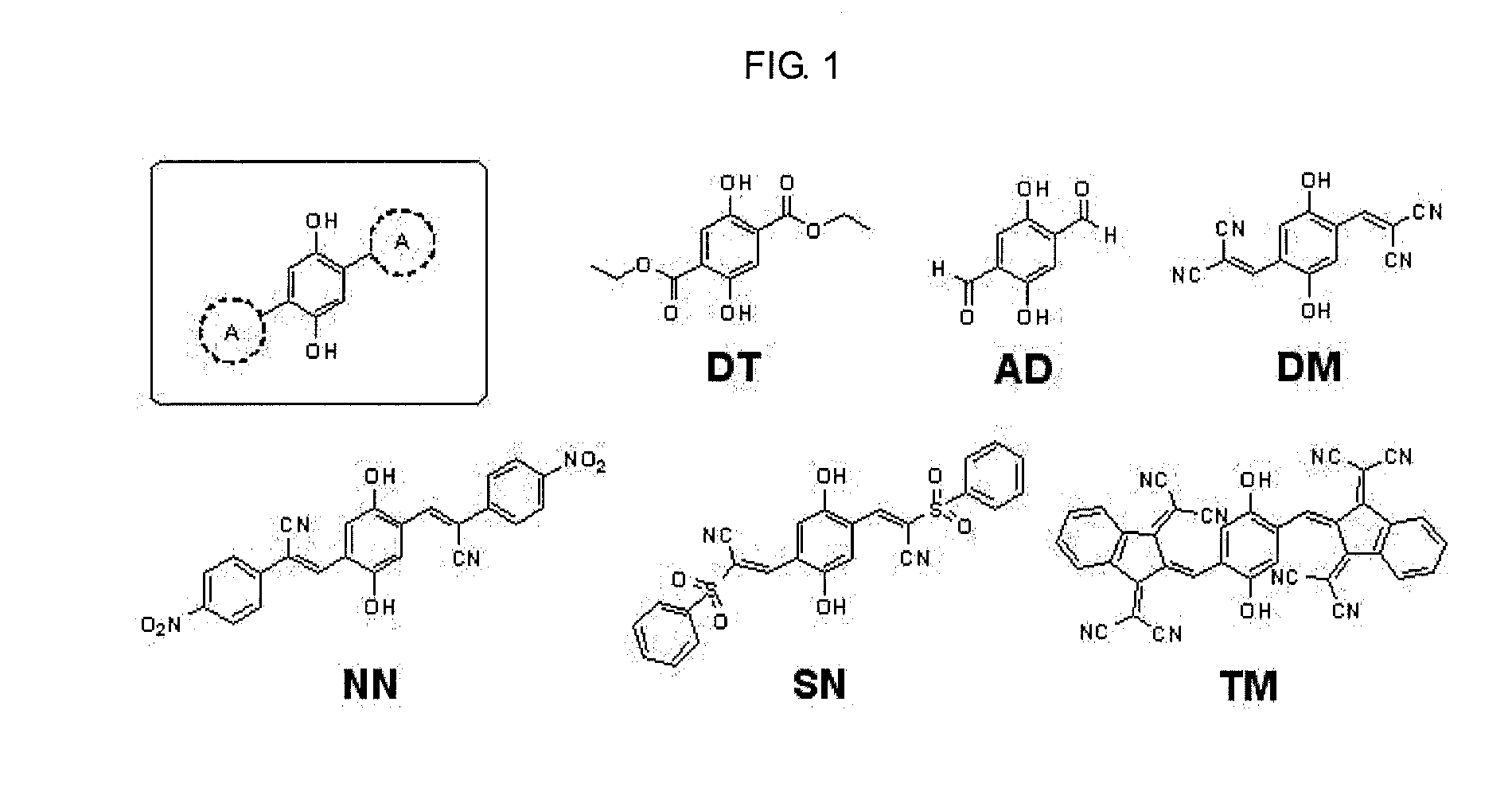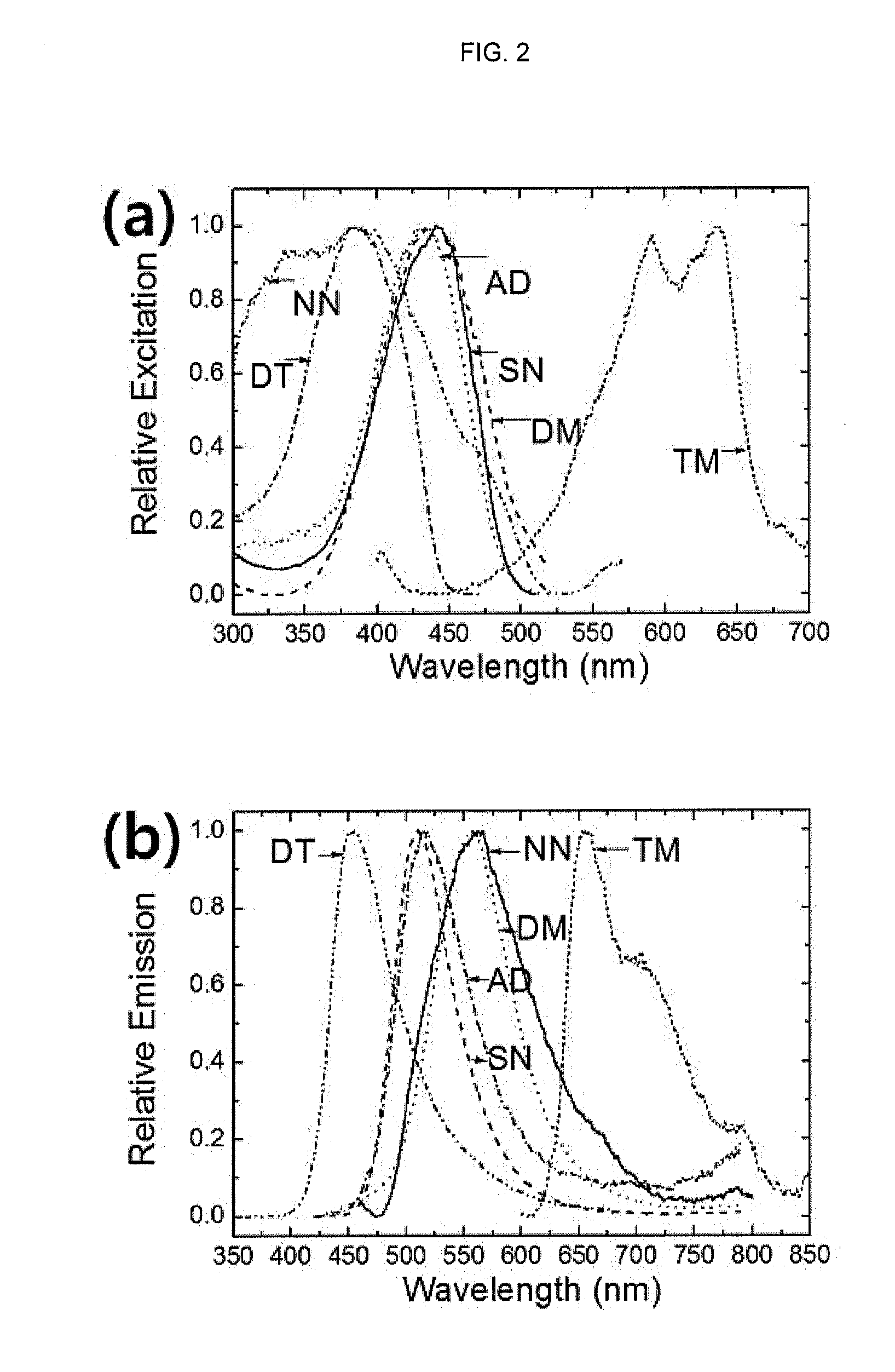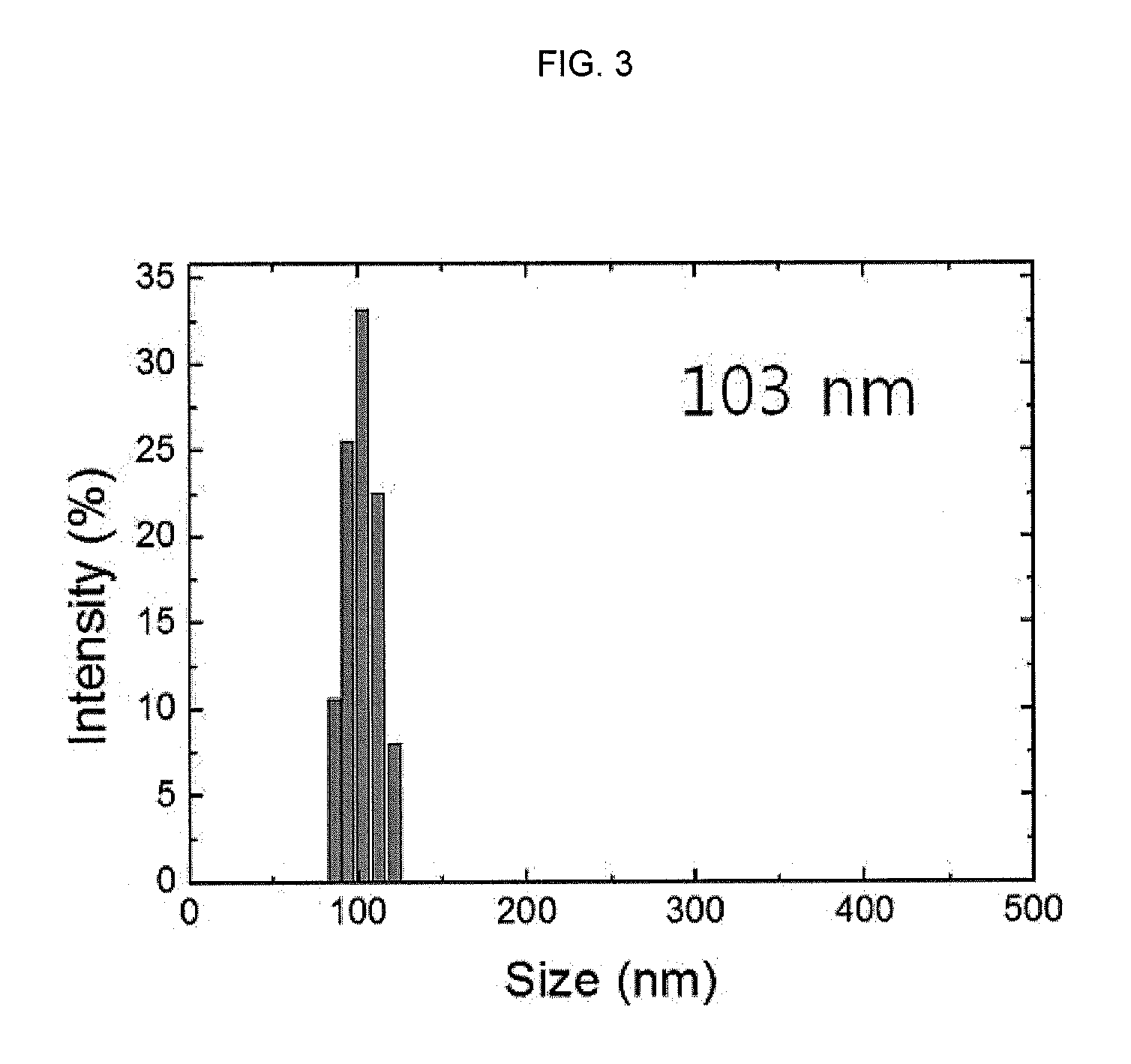Fluorescent nanoprobe for detecting hydrogen peroxide and fabrication method thereof
- Summary
- Abstract
- Description
- Claims
- Application Information
AI Technical Summary
Benefits of technology
Problems solved by technology
Method used
Image
Examples
example 1
Fluorescent Molecule Synthesis and Nanoparticle Fabrication and Fluorescence Characteristic Analysis
(1) Synthesis of 2,5-dihydroxybenzene-1,4-dicarboaldehyde (AD)
[0066]0.5 g of 2,5-dimethoxybenzene-1,4-dicarboaldehyde (AD) and 25 mL of boron tribromide were dissolved in 150 mL of chlorobenzene and stirred at room temperature for 12 hours. After complete reaction, the reacted mixture was neutralized with sodium carbonate, followed by extraction with water and dichloromethane and recrystallization within dichloromethane, thereby obtaining 2,5-dihydroxybenzene-1,4-dicarboaldehyde. The obtained product exhibited yield, property and NMR analysis result as follows.
[0067]70% Yield, Yellow crystal, H-NMR (300 MHz, DMSO, TMS): δ=10.30 (s, 2H), 7.20 (s, 2H; aromatic)
(2) Synthesis of Fluorescent Molecules (DM, SN, NN, TM)
[0068]Several types of electron acceptors were introduced in 1,4-position of benzene ring containing 2,5-dihydroxyl group, thereby synthesizing molecules exhibiting fluorescen...
example 2
Synthesis of Hydrogen Peroxide-Sensitive Sulfonated Benzene Compound and Fabrication of Fluorescent Nanoprobe with the Same
(1) Synthesis of diethyl 2,5-bis(pentafluorophenyl)sulfonyl)oxy)terephthalate (FSDT)
[0079]The structure and use of pentafluorophenyl sulfonate, as a functional group, which was separated by reaction with hydrogen peroxide to derive fluorescence changes, were understood with reference to the previous patent applications [Document 8: Hatsuo Meada et al., and USA Patent Application No. U.S. Pat. No. 7,491,832 B2].
[0080]0.2 g of DT was dissolved in 5 mL of tetrahydrofuran. The DT solution was then mixed with 0.5 g of pentafluorobenzenesulfonyl chloride and 0.2 mL of triethylamine, followed by reaction at room temperature for 6 hours. Afterwards, a crystalline material was removed by filtration. The obtained mixture was re-precipitated in ethyl acetate to obtain a product. The product exhibited the following yield, property and NMR analysis result.
[0081]92% Yield, w...
example 3
Hydrogen Peroxide Detection Characteristic Evaluation of Aqueous-Dispersed Fluorescent Nanoprobe
(1) Reaction Acceleration Function Test of Hydrophobic Organic Base
[0086]FIG. 4 is a schematic diagram of fluorescence generation in response to reaction between aqueous-dispersed fluorescent nanoprobes and hydrogen peroxide. In regard of the aqueous-dispersed fluorescent nanoprobes described in this specification, as shown in FIG. 4, the reaction between the hydrogen peroxide-sensitive sulfonated benzene compound and hydrogen peroxide may be accelerated by the hydrophobic organic base integrated in the nanoparticles, thereby allowing an extremely fast detection of the hydrogen peroxide.
[0087]To prove the reaction acceleration effect of the organic base, nanoprobes each having a central portion, in which the hydrogen peroxide-sensitive sulfonated benzene compound and 1,3,5-trimethylbenzoic acid as acid molecules were integrated, were prepared as a control group by the same method as Examp...
PUM
| Property | Measurement | Unit |
|---|---|---|
| Percent by mass | aaaaa | aaaaa |
| Percent by mass | aaaaa | aaaaa |
| Percent by mass | aaaaa | aaaaa |
Abstract
Description
Claims
Application Information
 Login to View More
Login to View More - Generate Ideas
- Intellectual Property
- Life Sciences
- Materials
- Tech Scout
- Unparalleled Data Quality
- Higher Quality Content
- 60% Fewer Hallucinations
Browse by: Latest US Patents, China's latest patents, Technical Efficacy Thesaurus, Application Domain, Technology Topic, Popular Technical Reports.
© 2025 PatSnap. All rights reserved.Legal|Privacy policy|Modern Slavery Act Transparency Statement|Sitemap|About US| Contact US: help@patsnap.com



